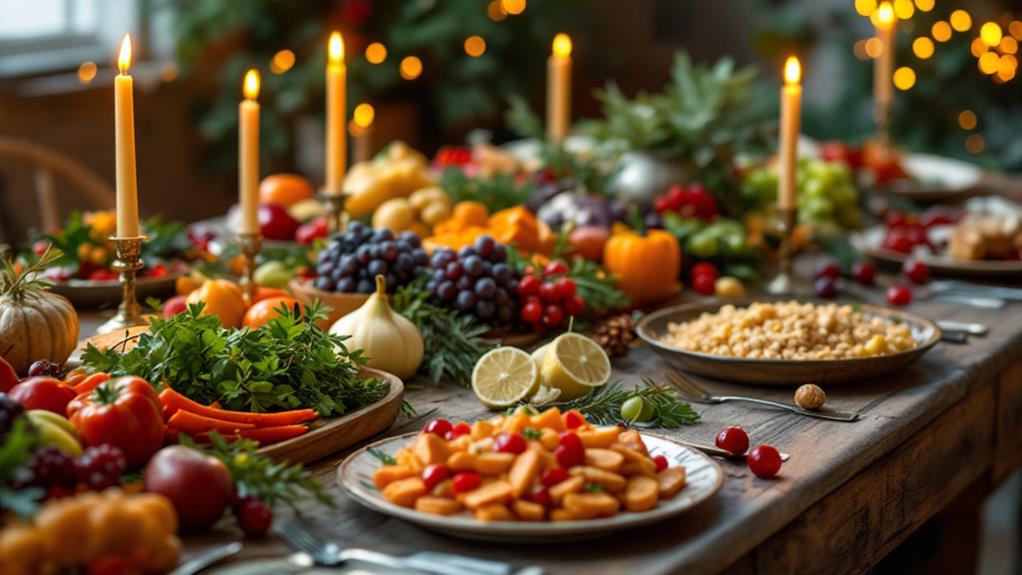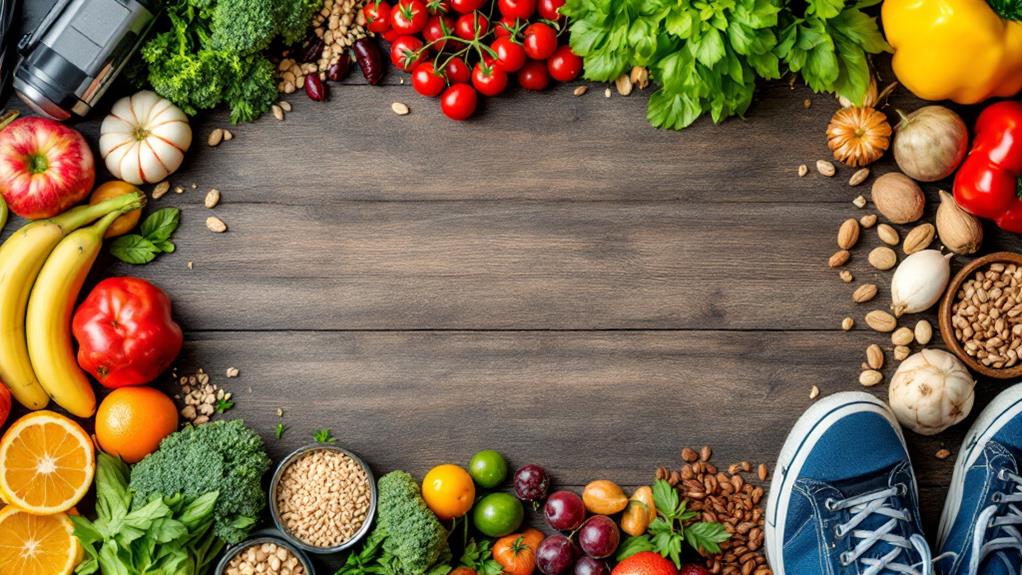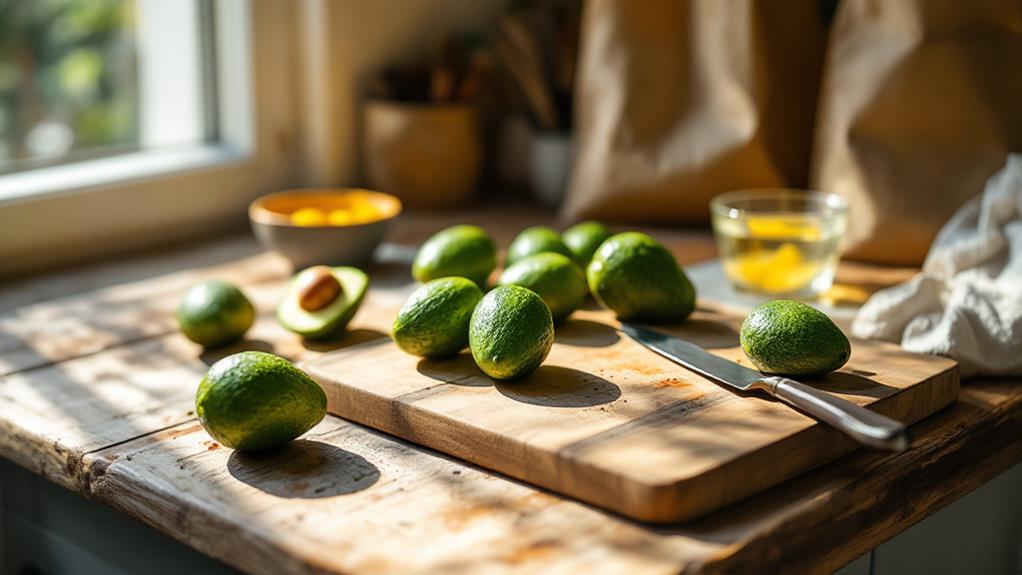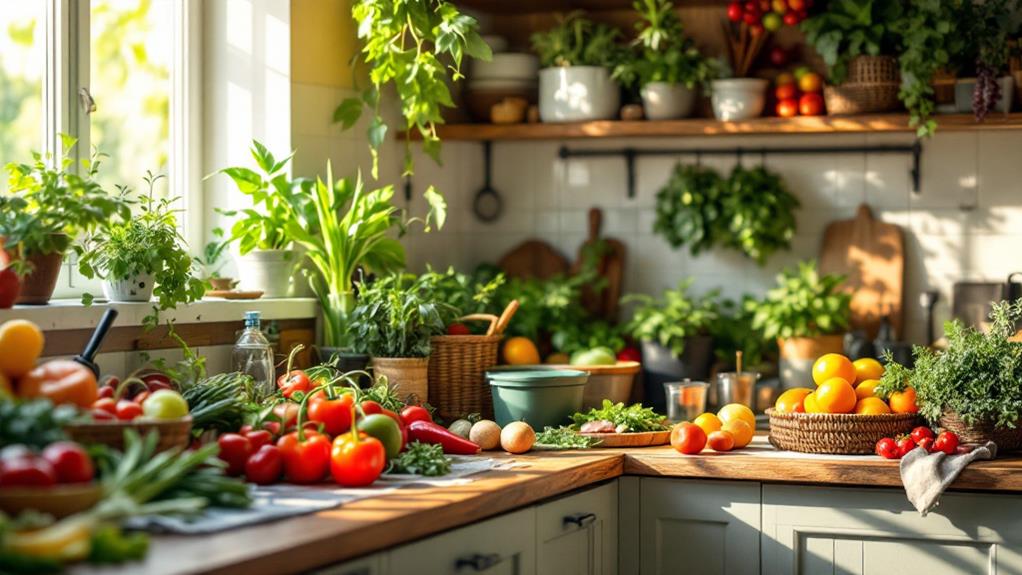Hot Hacks to Stay Cool When It’s Burning Outside: Summer Survival Tips
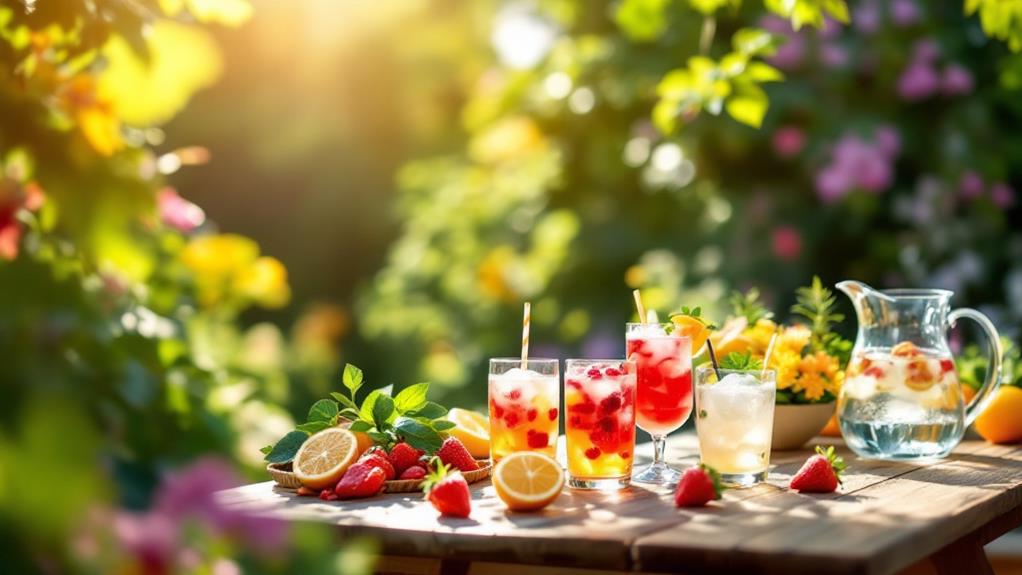
When it's blazing outside, smart strategies can help you stay cool. Focus on sun safety by avoiding peak hours and wearing protective clothing. Keep hydrated by drinking plenty of water and snacking on watermelon or cucumbers. Use cooling techniques like ice packs on pulse points and improve fan efficiency by placing a bowl of ice in front. Opt for light meals and freeze fruits for revitalizing snacks. Moderate alcohol intake to prevent dehydration, and keep your home cool with thermal curtains. Schedule activities for cooler times and recognize signs of heat-related illnesses. Uncover even more effective tips and insights.
Be Sun Smart
Regarding enjoying summer safely, being sun smart is key. You're going to want to strategically plan your outdoor activities to avoid the peak sun hours between 10 AM and 4 PM, as UV radiation is at its strongest. Always apply a broad-spectrum sunscreen with an SPF of at least 30. Reapply every two hours to guarantee continuous protection against harmful UV rays and prevent sunburn. A wide-brimmed hat can be your best friend, shielding your face, neck, and ears from direct sunlight.
To stay cool, take regular breaks in shaded or air-conditioned areas. This helps prevent overheating and gives your body a chance to cool down. In regards to clothing, opt for light-colored, loose-fitting garments. They allow better air circulation and reflect sunlight, enhancing comfort.
Stay mindful of how your body feels and take action to prevent heat-related illnesses. Cooling down with some cool water not only refreshes you but also helps regulate your body temperature. Remember, being sun smart doesn't just protect you from sunburn; it's vital for your general well-being during those scorching summer days.
Hydration Strategies
Staying hydrated is vital for keeping your body functioning at its best, especially in the summer heat. To stay safe and cool in the heat, it's important to drink plenty of water. Aim to consume at least eight 8-ounce glasses daily, particularly during hot weather and outdoor activities. This is one of the most effective hydration strategies.
Incorporate hydrating foods like cucumbers, watermelons, and oranges into your diet. These foods have high water content and can help replenish fluids effectively. Also, monitor for signs of dehydration, such as dark urine, dry mouth, and dizziness. Recognizing these signs early can help you adjust your water intake promptly.
Set reminders to drink water throughout the day, as waiting until you feel thirsty might mean you're already dehydrated. This is especially true in hot conditions. Avoid caffeinated and alcoholic beverages, as they can contribute to dehydration and hinder your body's ability to regulate temperature effectively.
Cooling Techniques

Amidst the sweltering heat of summer, effective cooling techniques can be your best ally for comfort. Staying cool is essential to maintaining a manageable body temperature. Here are some practical methods to keep the heat at bay:
- Wrap a Cold, Wet Towel Around Your Neck: This simple trick utilizes evaporation to cool your skin. Just wrap it around your neck, and you'll feel instant relief. Reapply as needed to stay comfortable.
- Take Advantage of Ice Packs on Pulse Points: Apply ice packs or cold water bottles to your wrists, neck, and temples. This can quickly lower your body temperature and provide immediate cooling relief.
- Use a Portable Fan with a Twist: Improve your portable fan's efficiency by placing a bowl of ice in front of it. The fan will blow a cool breeze, effectively lowering the perceived room temperature.
- Dampen Your Curtains: Wet your curtains with cool water. As air passes through them, it cools down, reducing indoor temperatures without needing air conditioning.
Smart Food Choices
While cooling techniques provide immediate relief from the heat, smart food choices can help sustain comfort throughout the day. Start by incorporating high-water-content foods like cucumbers and strawberries into your diet. With cucumbers boasting 95% water and strawberries 91%, they're excellent for maintaining hydration. Light meals, such as salads, are perfect for summer. They're easy to digest and won't overheat your body like heavy meals can.
Don't shy away from spicy foods either. Consumed in moderation, they can trigger sweating, which helps cool your body as the sweat evaporates. For a revitalizing and hydrating snack, freeze fruits like grapes and berries. Not only do they offer a burst of flavor, but they also provide essential water content and nutrients.
Soups and broths might seem like winter foods, but they're actually great for summer if made with hydrating ingredients. They help replenish fluids and electrolytes lost through sweating. Whether you're sipping on a chilled gazpacho or a light broth, these options keep your hydration levels in check. By making these smart food choices, you'll stay cool, invigorated, and ready to tackle the summer heat.
Alcohol Moderation

How often do you consider the impact of alcohol on your hydration levels during those hot summer days? It's easy to overlook but vital to understand. Alcohol consumption can lead to dehydration, making it risky when the mercury rises. When you drink alcohol, your body struggles to regulate temperature, increasing your risk of heat exhaustion and heat stroke. Understanding this can help you take steps to stay safe and cool.
Here are some tips to keep in mind:
- Moderation is Key: Limit your alcohol intake. The CDC recommends moderating your consumption to avoid dehydration and maintain hydration levels, especially during the summer heat.
- Choose Non-Alcoholic Alternatives: Opt for invigorating drinks like sparkling water or iced herbal teas. These help you stay cool and hydrated without the dehydrating effects of alcohol.
- Stay Aware of Your Body: Pay attention to how alcohol affects you in the heat. Even moderate drinking can impair judgment, leading you to underestimate your risk of heat-related illnesses.
- Plan Outdoor Activities Wisely: Consider the weather conditions and your alcohol consumption when planning outdoor activities to prevent heat exhaustion and heat stroke.
Home Cooling Tips
Keeping your home cool during the summer heat can be a challenge, but with a few effective strategies, you can make a noticeable difference. Start by installing weather-stripping around doors and windows. This simple method blocks hot air from entering, helping to keep your home filled with cool air. Furthermore, consider using thermal curtains or blackout shades. These can reduce heat gain from direct sunlight by up to 45%, especially during peak heat hours.
Make it a habit to close the windows and blinds during the hottest part of the day. This practice helps maintain a cooler indoor environment, allowing you to rely less on air conditioners, which can be a significant energy drain. For a quick and budget-friendly solution, apply bubble wrap to your windows. This trick reduces heat transfer and lowers indoor temperatures effectively.
Don't forget about air conditioners—regular maintenance is key. Clean and service your units regularly to guarantee they operate efficiently. A well-maintained air conditioner can function up to 30% more efficiently, meaning your home's temperature will likely stay cooler without skyrocketing energy bills. By implementing these tips, you can enjoy a more comfortable and cooler home environment.
Plan Outdoor Activities
When planning outdoor activities in the summer, the sun can be both a friend and a foe. To make the most of your time outside while staying cool, consider these smart strategies:
- Schedule Wisely: Plan outdoor activities during the cooler parts of the day. Early mornings or late evenings are perfect times to avoid peak heat hours, usually from noon to 4 PM, when temperatures soar.
- Stay Informed: Always monitor local weather forecasts and heat advisories. This allows you to adjust your plans as necessary, ensuring the safety and comfort of everyone involved. If a heat advisory is issued, consider rescheduling or modifying the activity.
- Embrace Water: Incorporate water-based activities like swimming or water games. These not only offer fun but provide immediate relief from the scorching sun, keeping everyone engaged and refreshed.
- Seek Shade: Use shaded areas effectively to minimize direct sun exposure. Regardless of whether it's under trees or canopies, these spots offer a cool retreat where participants can relax and hydrate regularly.
Recognizing Heat-Related Illnesses
Amidst the warm hug of summer, it's vital to be vigilant about recognizing heat-related illnesses that can quickly escalate if ignored. Heat exhaustion is a common concern, showing up as heavy sweating, weakness, dizziness, nausea, and fainting. If these symptoms aren't addressed, they can lead to heat stroke, a severe condition characterized by a high body temperature of 104°F or higher, rapid pulse, confusion, and hot, dry skin. This is a medical emergency that requires immediate attention.
To prevent these illnesses, drink lots of fluids to stay hydrated and keep your body cool. Recognizing early signs of dehydration, such as dry mouth, headache, and fatigue, can help you avoid more serious conditions like heat exhaustion and heat stroke. Make sure you have access to shade and cool environments, especially during extreme heat. This is vital for vulnerable groups, including children, the elderly, and those with chronic health conditions.

